Yihua Hotel
5.8 Km 1229 2024-04-07
76, Jeollagamyeong-ro, Wansan-gu, Jeonju-si, Jeonbuk-do
+82-63-284-6699
As a three-story building with a basement floor, Jeonju Yihua Hotel is located in Jeon-dong in the eastern part of Jeonju Hanok Village. It's a medium-sized hotel with 26 Suite, Standard Double, Standard Korean-style, and Deluxe Twin rooms. The room rates are reasonable for both tourists and business travelers. The front desk lobby is on the 1st floor, and the rooms are on the 2nd and 3rd floors. Facing the front desk are a computer with Internet connection and a printer as well as a microwave oven. The 1st floor of the hotel is rented to a cafe named "Turista," which is popular for its brunch. Many guests staying at Yihua Hotel have brunch here before taking a tour of Jeonju. Nearby tourist destinations include Gyeonggijeon Shrine, Jeondong Catholic Cathedral, Jeonju Hanok Village, JIFF (Jeonju International Film Festival) Street, and Pungpae Jigwan (Jeonju Inn). The Gyeonggijeon Shrine, Jeonju JIFF Street, and Pungnammun Gate are 3 minutes, 5 minutes, and 3 minutes away from the hotel on foot, making it a popular place to stay among Korean and foreign tourists.
Deokindang
5.8 Km 942 2024-04-07
28-3, Pungnammun 3-gil, Wansan-gu, Jeonju-si, Jeonbuk-do
063-282-6336, 010-5654-3554
Deokindang is located across from the west street of Jeonju Hanok Village. The guesthouse is surrounded by low walls, inside of which there are grass yard, stone pavement, and four traditional houses with three guestrooms, which are called the Large Room, Small Room, and Kitchen Room. Here, the "Kitchen Room” is not actually a kitchen, but a kitchen turned into a bedroom. The Large Room in the center of the main building can accommodate up to 8 people, making it a perfect place to stay for a large family. It’s furnished with thin, white calico sheets, which are very soft to the touch.
Situated on the outskirts of Jeonju Hanok Village and yet very close to Gyeonggijeon Shrine, Jeondong Catholic Cathedral, Nambu Market, and Jeonju Pungpae Jigwan (Jeongju Gaeksa. Treasure No. 583), the guesthouse is quiet and conveniently located as well for those taking a tour of Jeonju. The owner of Deokindang also owns another guesthouse called Su House, so the guests of Deokindang can have access to the Community Room of Su House.
Sky [Korea Quality] / 하늘애 [한국관광 품질인증]
5.9 Km 5672 2024-04-07
33-11, Dongmun-gil, Wansan-gu, Jeonju-si, Jeonbuk-do
+82-10-6453-1200
Sky is a guesthouse located in an alley next to the Jeonju Hanok Village Parking Lot. The house was built in 1930 and remodeled in 2014. It was originally a Japanese-style house, but the original building was completely demolished and a traditional Korean house was built in its place. The sheets and blankets in all the guestrooms are embroidered by the owner of the guesthouse. Her embroidery skills make some of the guests choose to stay at this guesthouse since they can learn the trade from her. She offers an embroidery class for such guests for only KRW 4,000 per person, and only 5 people are allowed in the class. If you want, you can also play the traditional Korean game called "yutnori" for free.
Museo de Retratos Reales (어진박물관)
5.9 Km 16777 2024-04-07
Taejo-ro 44, Wansan-gu, Jeonju-si, Jeonbuk-do.
Este museo se encuentra dentro del santuario Gyeonggijeon, en Jeonju, y alberga los retratos de antiguos reyes del período Joseon. Entre ellos, el del fundador de la dinastía, el rey Taejo (Lee Seonggye).
Paseo con el Rey (왕과의 산책)
5.9 Km 5539 2024-04-07
Taejo-ro 44, Wansan-gu, Jeonju-si, Jeonbuk-do
+82-63-232-9938
Se realiza el “Paseo con el Rey” todos los sábados en Jeonju. El recorrido de 100 personas incluye una vista especial del santuario Gyeongggijeon con música y té. Un guía turístico le llevará por la hermosa ciudad de Jeonju.
Sala de Exhibición de Artesanías de Jeonju (전주공예품전시관)
5.9 Km 5263 2024-04-07
Taejo-ro 15, Wansan-gu, Jeonju-si, Jeonbuk-do.
+82-63-282-8886
La sala fue inaugurada el día 20 de abril del 2002. Presenta una edificación tradicional y exhibe todo tipo de artesanías de la región de Jeollabuk-do. Está formada por las siguientes instalaciones anexas: el museo de exposición de artesanías, el centro de actividades, el espacio destinado a tomar té y adquirir los artículos fabricados por los famosos artesanos, y la tienda de suvenires. Entre las actividades disponibles hay artesanías en papel tradicional hanji, en cerámica, en madera, en bordados tradicionales, etc., entre otros materiales.
Jeonju Nanjang (전주난장)
5.9 Km 0 2024-04-06
Dongmun-gil 33-20, Wansan-gu, Jeonju-si, Jeonbuk-do
Inyeon Hanok [Korea Quality] / 인연 [한국관광 품질인증]
5.9 Km 4407 2024-04-07
36, Hanji-gil, Wansan-gu, Jeonju-si, Jeonbuk-do
+82-10-2908-4965
The Korea's largest "hanok (traditional Korean house)" village in the middle of Jeonju, Jeollabuk-do has been there for hundreds of years. Today, you can see new as well as old houses there. “Inyeon” is one of the traditional Korean houses located near the public parking lot on the outskirts of the hanok village, making it a great place to stay overnight in quiet. The word "inyeon" means "relationship" in Korean, referring to all types of ties with other people. The owner of the guesthouse named the place as such because she is greatful for all the guests and wanted to treat them well. She opened the guesthouse in September 2014. Since then, she has been kind enough to tell her guests which places are good to visit and which foods are delicious. She makes sure all the facilities including sheets and blankets are maintained clean for her guests to have a memorable stay. Built in the 1960's and remodeled in 2008, the traditional house is neat with most of the traditional features. It has four guestrooms named "Apricot Flower", "Orchid", "Chrysenthemum", and "Bamboo". The "Orchid Room" and "Bamboo Room" can accommodate up to seven people. The floor is covered with lacquered traditional Korean paper, and there are a number of traditional items in the room including the Korean gong. The traditional Korean ceiling rafters are visible in all the rooms.
All the rooms are furnished with a bathroom, air conditioner, TV, refrigerator, toiletries, and hair dryer. There is a 200-year-old pomegranate tree in the yard, and a table and chairs right in front of it for the guests to relax on a fair day. The table made of an old door and chairs made of a log under the red pomegranates are one of the most outstanding features of this guesthouse. There are lots of traditional items in the yard with which you can play traditional Korean games such as "yutnori" and "jegichagi", all of which can be used by the guests for free.
Aldea Tradicional de Jeonju (Cittaslow) (전주한옥마을 [슬로시티])
6.0 Km 14189 2024-04-06
Girin-daero 99, Wansan-gu, Jeonju-si, Jeonbuk-do.
La Aldea Tradicional de Jeonju (Hanok Maeul) está ubicada en las zonas de Pungnam-dong y Gyo-dong. En esta área se encuentran concentradas aproximadamente 800 casas tradicionales de Corea, las hanok. Este lugar es famoso por conservar intacto el estilo tradicional, proporcionando la oportunidad de disfrutar el ambiente antiguo y folclórico del país.
Lo más elegante de esta aldea es seguramente el estilo de los techos de las hanok. La peculiaridad de esta vivienda es que el borde de los techos está ligeramente dirigido hacia el cielo. La estructura de estas casas se divide en dos secciones: anchae y sarangchae. Anchae, siendo el lugar donde permanecen las mujeres, también es llamado gyusubang; mientras que el sarangchae es el lugar utilizado por los hombres, también llamado seonbibang. La construcción arquitectónica diferencia el sector destinado a los hombres y mujeres. De tal manera, el anchae, por ser el lugar donde residen las mujeres, se localiza en la parte más resguardada y silenciosa de la casa.
Otra característica es que los cuartos son de ondol, un sistema de calefacción instalado en el suelo. La estructura del ondol es bastante simple, consiste en aplicar el sistema de calefacción debajo del piso, con pasajes horizontales para el humo y una chimenea vertical para el escape. Una de las grandes ventajas es que en verano es fresco y en invierno, caliente.
Además de los recorridos, observando la sabiduría y las costumbres tradicionales de la antigüedad, otro de los atractivos lo componen las actividades culturales que consisten en experimentar las habitaciones de ondol y degustar del plato típico famoso de la ciudad, el bibimbap (arroz mezclado con surtido de vegetales).
Santuario Gyeonggijeon (경기전)
6.0 Km 5254 2024-04-06
Taejo-44, Wansan-gu, Jeonju-si, Jeonbuk-do.
El Santuario Gyeonggijeon fue fundado en 1410 y es donde se guarda el retrato del rey Lee Taejo, el fundador de la dinastía de Joseon, dibujado en Jeonju, Gyeongju y Pyongyang. La estructura fue parcialmente destruida durante la Guerra de Imjin de 1592 a 1598. La estructura actual fue reconstruida en 1614.
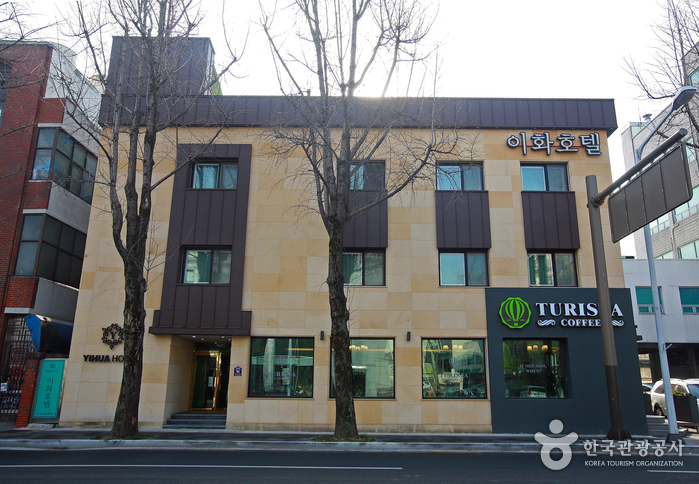
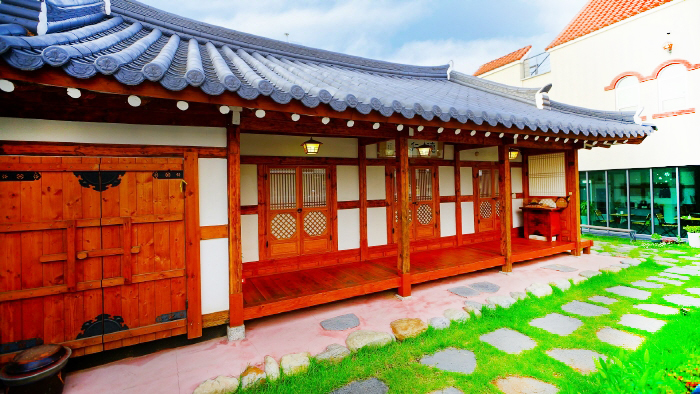
![Sky [Korea Quality] / 하늘애 [한국관광 품질인증]](http://tong.visitkorea.or.kr/cms/resource/39/2046939_image2_1.jpg)

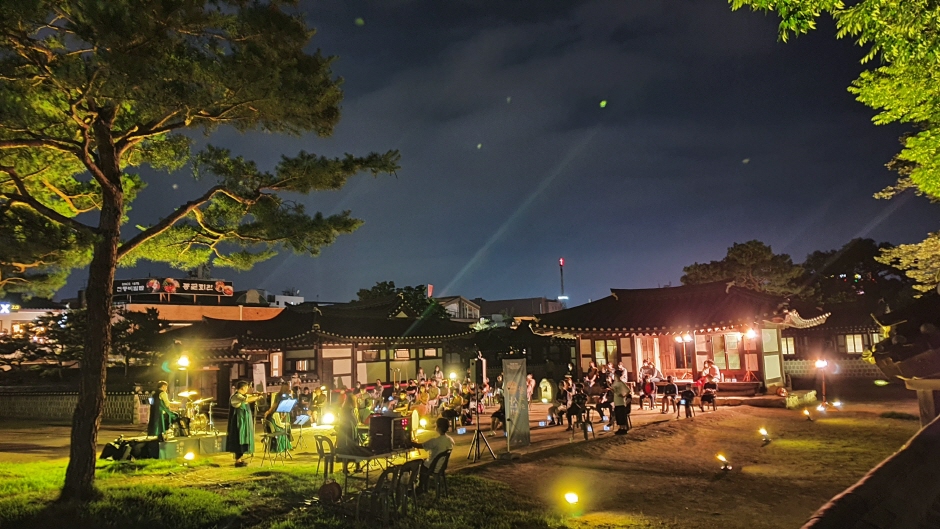
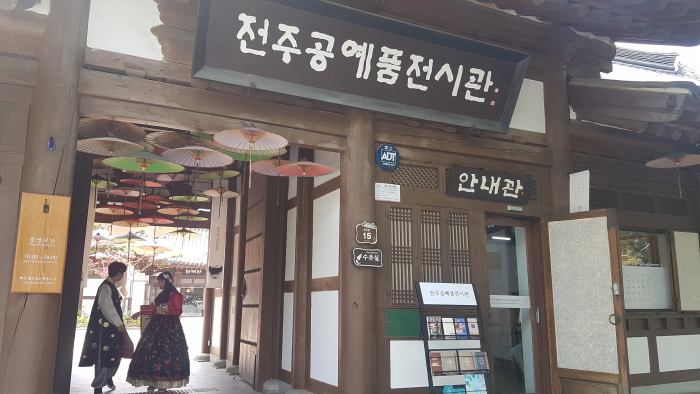
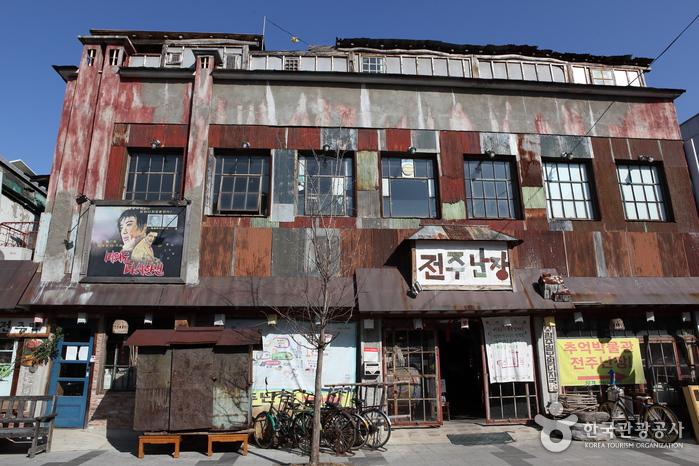
![Inyeon Hanok [Korea Quality] / 인연 [한국관광 품질인증]](http://tong.visitkorea.or.kr/cms/resource/21/2583721_image2_1.jpg)

 Español
Español
 한국어
한국어 English
English 日本語
日本語 中文(简体)
中文(简体) Deutsch
Deutsch Français
Français Русский
Русский